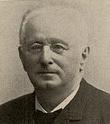Ricinus [Ric]
Aphthous diarrhoea, especially among children improperly fed; frequent and griping stools; varying in color from greenish- yellow to dark grass-green, then becoming more liquid, and mixed with slimy and gelatinous masses mixed with blood; each stool accompanied by pain and tenesmus; mouth dry and aphthous, belly
tumid and painful, anus inflamed; the child becoming more and more feverish, emaciated and somnolent.
Secale-corn [Sec]
Profuse undigested stools, watery, very offensive and discharged in fits and starts, followed by intense prostration.
Senna [Senn]
Dark-colored water, with cutting pains, flatulency, but less severe than in Jal. (which has copious watery discharge, accompanied by screams and restlessness).
Sepia [Sep]
Almost constant oozing from bowels; green or sour-smelling diarrhoea of children; rapidly EXHAUSTING DIARRHOEA; stool, having a putrid, sourish, foetid smell, expelled suddenly and the whole of it at once; prolapsus ani; fontanelles open; (<) from taking boiled milk.
Silicea [Sil]
CHILD VERY MUCH EMACIATED BY LONG CONTINUANCE OF DIARRHOEA; it nurses well, but the food passes through it undigested and fails to sustain it, alternating with loss of appetite and vomiting; open fontanelles; much perspiration about head; great thirst; emaciation; cold hands and feet, with cold sweat on them; rolling of head; suppressed secretion of urine; watery, very offensive stools; aversion to milk, refuses to nurse and if it does, vomits; feet very dry and smell like those of an old person.
Stannum [Stann]
Stools green and curdy, with much colic, (>) only by carrying the child against the point the shoulder; rectum inactive, much urging even with soft stool; deficient urging to urinate, from insensibility of bladder, which feels full, yet secretion is scanty; hemiplegia occurring during the course of the disease, paralyzed parts are constantly moist from perspiration.
Staphisagria [Staph]
Diarrhoea associated with stomach ache, tongue and gums white and spongy; cutting pains before and after stools, with tenesmus of rectum during stool and escape of hot flatus smelling like rotten eggs, (<) by every attempt to take food or drink.
Sulphuric-acid [Sul-ac]
Diarrhoea with great debility, stools watery, very offensive, looking stringy or chopped, bright yellow, with aphthae and great irritability.
Sulphur [Sulph]
Particularly in children of delicate parents; the discharges are slimy, brown, green, or white, often marked with slight streaks of blood; redness around the anus and excoriation between the thighs; hot palms and soles; dysuria; worse in the morning.
Veratrum-alb [Verat]
Stools profuse, watery, frequent, with thirst and vomiting, baby looks much exhausted after each stool; cold sweat on forehead from the least movement of the body.
Zincum [Zinc]
Feet constantly fidgety; on awaking, the child appears frightened, and its head rolls from side to side; during sleep it cries out (Apis), starts and jumps; painless, papescent diarrhoea for many days, but some colic after stools and emission of flatus.
Also read Homeopathy for Infants and Children

